
Blaise de Vigenère was a French diplomat, cryptographer, translator and alchemist.

Michel Corrette was a French composer, organist and author of musical method books.
The history of French animation is one of the longest in the world, as France has created some of the earliest animated films dating back to the late 19th century, and invented many of the foundational technologies of early animation.

Vladimir Cosma is a Romanian composer, conductor and violinist, who has made his career in France and the United States.

Jean-Christophe Grangé is a French mystery writer, journalist, and screenwriter.

Jean Fonteneau, dit Alfonse de Saintonge or João Afonso in Portuguese was a Portuguese navigator, explorer and corsair, prominent in the European age of discovery. He had an early career in Portugal and later served the King of France.
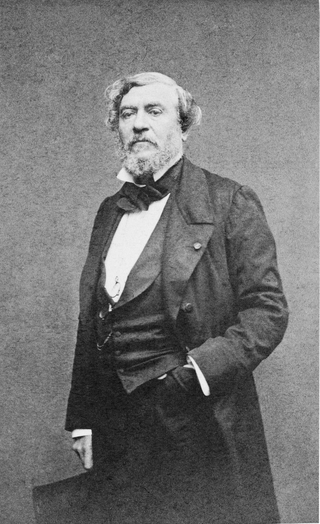
Jean Antoine Théodore Gudin was a French marine painter and court painter to both king Louis Philippe and subsequently Emperor of the French Napoleon III. Along with Louis-Philippe Crépin, he became one of the first two official Peintres de la Marine in 1830.

Charles Pierre Claret, comte de Fleurieu was a French Navy officer, explorer, hydrographer and politician. He served as Minister of the Navy under Louis XVI, and was a member of the Institut de France. He was brother to botanist Marc Antoine Louis Claret de La Tourrette.

The Ministry of the Navy was a section of the French government – apart from the Ministry of War – that was in charge of the French navy and colonies.

Dominique Venner was a French historian, journalist, and essayist. Venner was a member of the Organisation armée secrète and later became a European nationalist, founding the neo-fascist and white nationalist Europe-Action, before withdrawing from politics to focus on a career as a historian. He specialized in military and political history. At the time of his death, he was the editor of the La Nouvelle Revue d'Histoire, a bimonthly history magazine.

The Naval battle of Barcelona was a naval engagement of the Franco-Habsburg War fought off Barcelona from 29 June to 3 July 1642 between a Spanish fleet commanded by Juan Alonso Idiáquez, Duke of Ciudad Real, and a French fleet under Jean Armand de Maillé-Brézé, Duc de Fronsac.
In a three-day battle, Brézé defeated the Spanish fleet, which was attempting to relieve some Spanish garrisons isolated along the Catalan coast, and forced the Duke of Ciudad Real to retreat to Majorca for repairs. As usual in most of the battles involving Maillé-Brézé, the French fleet made an extensive use of her fireships. This time, however, a large French vice-flagship, the Galion de Guise, fell victim to one of his own fireships and went down enveloped in flames. The victory, in any case, was for the French fleet, and its main long-term effect was the fall of Perpignan into the hands of the Franco-Catalan army.
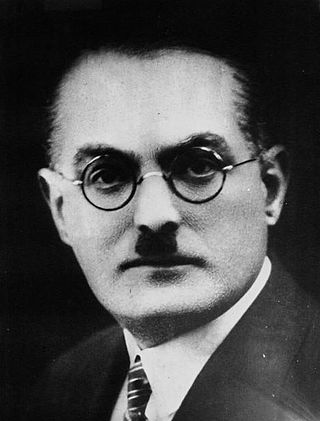
Roger Vercel was a French writer.
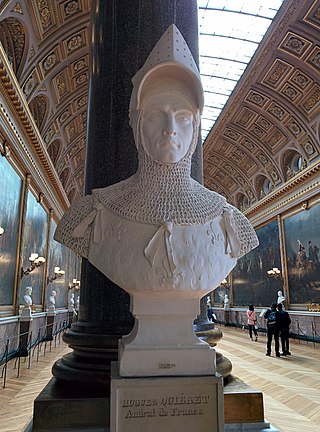
Hugues Quiéret was a French nobleman, admiral and military commander. He was a knight, lord of Tours-en-Vimeu and of Hamicourt, both in Picardy. Before becoming an admiral, he was an advisor, Chamberlain, Grand Master of France, then the seneschal of Beaucaire and Nimes from 1325 to 1332.

Jean-Philippe Jaworski is a French author of fantasy literature and role-playing games.
Jean du Tillet was a French Catholic bishop.
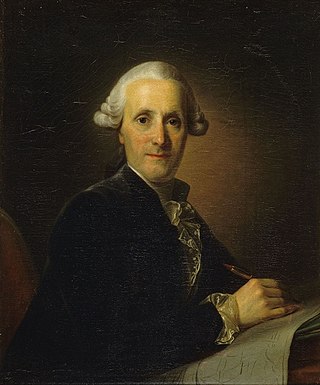
Nicolas-Marie Ozanne was a naval engineer and marine artist, author of a naval treatise and creator of a series of 60 views of the ports of France. His work witnesses to the French Navy of his time, particularly the Ponant (western) fleet.

The invasion of Martinique in 1674 was an unsuccessful attempt by the Dutch Republic to conquer the Caribbean island of Martinique from France. In spite of overwhelming Dutch superiority in men and ships, the French won a decisive and unexpected victory.

The bombardment of Algiers in 1683 was a French naval operation against the Regency of Algiers during the French-Algerian War 1681–88. It led to the rescue of more than 100 French prisoners, in some cases after decades of captivity, but the great majority of Christian captives in Algiers were not liberated.
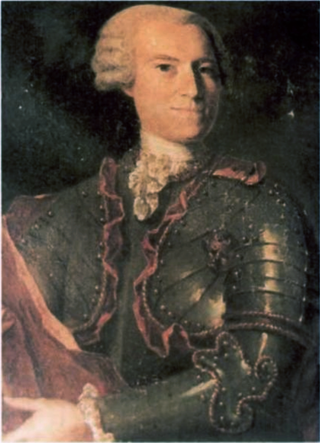
Jean-Baptiste Mac Nemara, baron du Mung, seigneur de la Rochecourbon, Tourfou, Moullet et autres lieux was a French Navy officer of Irish origin.
Brillant was a 64-gun ship of the line of the French Navy. She was first classified as a Second-rank ship, and later reclassified as a Third-rank. She was built between 1689 and 1690 at Le Havre, under supervision by engineer Étienne Salicon. She served until 1719, and took part in the Nine Years' War (1688–1697) and the War of Spanish Succession (1702–1714).
















